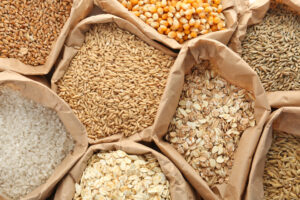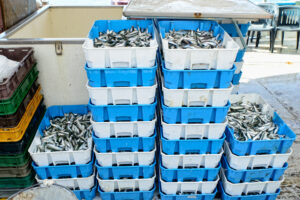In the week before Thanksgiving, we predicted yet another “do not eat” announcement from FDA related to romaine lettuce. Since then there have been more illnesses linked to the pre-Thanksgiving outbreak as well as a couple more outbreaks. So what needs to change and what is FDA doing about it? As FDA reports on three separate outbreaks of E. coli O157:H7 linked to romaine, the agency has taken steps to accelerate routine inspections of small farms by the states. In a little-noticed December 6 announcement, FDA stated that it is allowing states an early start on the routine Produce Safety Rule inspections of small farms that were to generally begin in the spring. States that receive competition A/B funding as part of the State Produce Implementation Cooperative Agreement Program (CAP) can begin routine inspections as early as January 1, 2020. The allowance is being made in response to several requests from states to have greater flexibility to align routine inspections with the winter growing season where applicable. It makes sense, considering that the leafy greens winter growing season has been wrought with recalls, and is a distinct change from the agency which is more likely to give extensions than it is to shorten deadlines. And it makes sense given the December 12 announcement of the three separate outbreaks under investigation: In its Dec. 12 update on the Salinas, Calif., romaine lettuce E. coli outbreak, FDA stated that it had deployed inspection teams in November to farms identified through the initial traceback investigation. The on-site investigations at these farms included collecting a wide-variety of samples for lab testing, including water, soil, soil amendments, scat and swab samples. While the majority of the samples tested negative for the outbreak strain, final results are pending and the Wisconsin Department of Health Services recently reported that it had isolated E. coli O157:H7 from a particular bag of pre-washed, chopped romaine lettuce. Earlier that week, FDA, CDC, and the Canadian Food Inspection Agency (CFIA) announced an outbreak linked to Fresh Express Sunflower Crisp Chopped Salad Kits. To date, the CDC reported eight confirmed cases in the U.S. across three states associated with this cluster of illnesses. The Public Health Agency of Canada also reports 24 cases in six Canadian provinces. Concurrently, FDA has been working with health officials in Washington State regarding an outbreak of E. coli O157:H7 associated with romaine consumption at a local restaurant chain. Washington State officials reported 10 confirmed and three probable cases in this outbreak with all reports of exposure in early to mid-November. While FDA notes that it is too soon to draw definitive conclusions, because of the expansive nature of the outbreaks, a common grower has been identified between each of the outbreaks, which, it states “is a notable development.” While the finding reinforces FDA’s earlier traceback results, it’s still too early to conclusively determine whether other sources may have also been involved in the outbreaks, but FDA is investigating other traceback leads identified to determine if it can triangulate a more precise location of the contamination. The agencies are actively using whole genome sequencing (WGS) to detect and link cases of foodborne illness, which, FDA says, “allows us to make connections earlier and to help prevent additional illnesses, ultimately saving lives.” It also notes key aspects of its progress as being its work with the states in both isolating the outbreak strain in food samples and assisting in providing traceback record, and the voluntary adoption of labeling best practices by many and technology-enabled traceability used by some in the industry. This has helped the agencies target its consumer avoidance to a defined growing region rather than avoidance of all romaine. However, FDA also noted that challenges remain in conducting traceback investigations into many segments of the produce industry, as it involves digging into past records to work backward from case-patients to the point of purchase of the product, and then through the supply chain to the source from where it was grown. And the first point of traceback is the reporting of an illness and layout of initial evidence, only after which can a traceback investigation begin by investigating retail establishments, suppliers and distributors and working its way back to the farm or farms that may have grown the lettuce that ended up in consumers’ meals and homes. “It’s a labor-intensive task requiring collecting and evaluating thousands of records while also trying to accurately document how the contaminated lettuce moved through the food supply chain to grocery stores, restaurants and other locations where it was sold or served.” With the repeat nature of outbreaks linked to leafy greens, particularly romaine, it’s no surprise that consumers are becoming almost inured to the incidents. One need simply check a few of the #romaine social media posts to see this; e.g., “Is high-risk #romaine simply the new normal?”; beneath a photo of romaine with LOTS of pepper and a fork: “Maybe this much pepper will make the romaine lettuce safe? #romaine”; and even, “Well, I bet they are making money with the #Romaine #Lettuce e-coli.” You have to admit that with the ongoing issues – and now three concurrent incidents – that there should be something new to report on one or all. Some root cause to announce. Some solution to provide. The leafy greens industry is under a lot of pressure from regulators, consumers, and their end users at retail and food service. We, yet again, have illnesses and new cases that go on for weeks; then finally after all those weeks, we are told that there may be a common grower. If indeed there is a common grower and if the system had been able to identify that grower during week one of the first outbreak, one has to wonder how many more illnesses and how much business disruption could have been avoided. What is the solution? What needs to change? My view is that a small number of produce industry players need to get together and, once and for all, solve the issues. We know bad things happen on farms, however much we try to prevent it – but what we fail to do all the time is to track those farms, water suppliers, and other risk factors on the labels through to retail and food service. We have to be able to connect the dots faster from consumer to grower and all points in between. The technology is there, the need is there, the pain is there – but maybe the willingness to step up and pay the price is not there – or is it now? If you have any questions at all about where your risks may lie or what you can be doing to prevent issues, give TAG a call. We can help!





